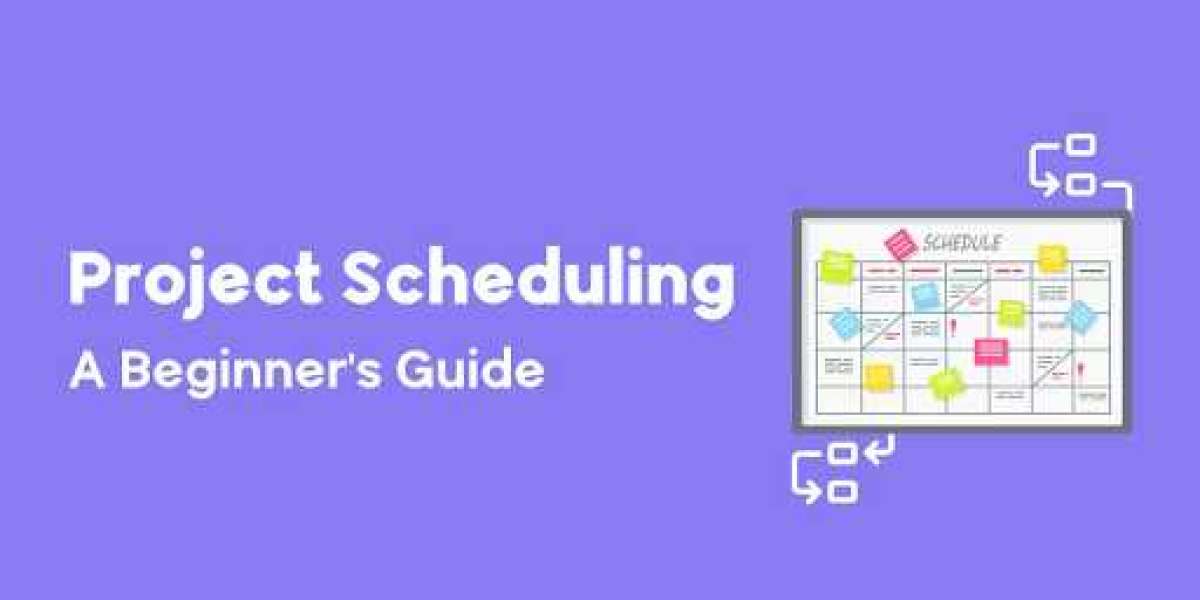Project scheduling is a vital aspect of project management, enabling teams to plan, organize, and execute tasks efficiently to achieve project goals within specified timeframes. In a dynamic business environment, project managers rely on a variety of tools and techniques to create schedules, allocate resources, and track progress effectively.
In this blog post, we'll explore the concept of project scheduling, its importance, and the various tools available to streamline the scheduling process.
What is Project Scheduling?
Project scheduling is the process of creating a timeline or roadmap that outlines the sequence of activities, milestones, and deadlines required to complete a project. It involves identifying project tasks, estimating their duration and dependencies, and allocating resources to ensure timely completion. Effective project scheduling facilitates resource optimization, risk mitigation, and stakeholder communication, enabling project teams to deliver results on time and within budget.
Importance of Project Scheduling
Project scheduling plays a crucial role in the success of any project for several reasons:
Time Management:
A well-defined project schedule helps teams manage time effectively by establishing clear deadlines and priorities for each task. It ensures that project activities are completed in a timely manner, preventing delays and bottlenecks.
Resource Allocation:
Scheduling allows project managers to allocate resources, such as personnel, equipment, and budget, efficiently. By identifying resource requirements and availability upfront, teams can avoid overallocation or shortages that could impede progress.
Risk Identification:
Through the scheduling process, project managers can identify potential risks and dependencies that may impact project timelines. By proactively addressing these risks and incorporating contingency plans into the schedule, teams can minimize disruptions and mitigate adverse effects on project delivery.
Stakeholder Communication:
A well-structured project schedule serves as a communication tool for stakeholders, providing visibility into project timelines, milestones, and progress. It fosters transparency and accountability, enabling stakeholders to stay informed and engaged throughout the project lifecycle.
Performance Monitoring:
Scheduling allows project teams to track progress, monitor task completion, and measure performance against established targets. By comparing actual versus planned progress, teams can identify deviations and take corrective actions to keep the project on track.
Common Project Scheduling Tools
Several project scheduling tools are available to help project managers create, manage, and visualize project schedules efficiently. Some of the most popular tools include:
Gantt Charts:
Gantt charts are visual representations of project schedules that display tasks, milestones, and dependencies over time. They provide a clear, intuitive way to view project timelines, track progress, and identify critical path activities.
Project Management Software:
Dedicated project management software, such as ProHance, Microsoft Project, Asana, Trello, and Monday.com, offers robust scheduling features, including task lists, resource allocation, timeline views, and collaboration capabilities. These tools often integrate with other project management functions, such as budgeting, resource management, and reporting.
Critical Path Method (CPM):
CPM is a scheduling technique used to identify the longest sequence of dependent tasks, known as the critical path, that determines the minimum duration required to complete the project. CPM helps project managers prioritize activities, allocate resources, and identify potential delays that could impact project deadlines.
PERT Charts:
Program Evaluation and Review Technique (PERT) charts are graphical representations of project schedules that illustrate task dependencies and uncertainty in task durations. PERT charts use three time estimates for each task (optimistic, most likely, and pessimistic) to calculate expected durations and identify critical tasks.
Resource Management Tools:
Resource management tools, such as resource calendars, resource leveling algorithms, and resource allocation matrices, help project managers allocate and optimize resources effectively across multiple projects. These tools ensure that resources are utilized efficiently and that workload is balanced to avoid overallocation or burnout.
Best Practices for Effective Project Scheduling
To maximize the benefits of project scheduling tools, project managers should follow best practices to create accurate, realistic schedules:
Define Clear Objectives:
Clearly define project goals, deliverables, and success criteria to establish a solid foundation for scheduling activities.
Break Down Tasks:
Decompose the project into smaller, manageable tasks with clear dependencies, durations, and resource requirements.
Sequence Activities:
Identify task dependencies and establish logical sequences to ensure that activities are completed in the correct order.
Estimate Durations:
Use historical data, expert judgment, and stakeholder input to estimate task durations accurately.
Allocate Resources:
Assign resources based on skill sets, availability, and project requirements to optimize resource utilization and prevent bottlenecks.
Monitor and Adjust:
Continuously monitor project progress, track actual versus planned performance, and make adjustments as needed to keep the project on track.
Conclusion
By leveraging project scheduling tools and techniques, project managers can create realistic schedules, allocate resources efficiently, and mitigate risks to ensure project success.
Whether using Gantt charts, project management software, or advanced scheduling techniques like CPM and PERT, adopting a structured approach to scheduling enables teams to deliver projects on time, within budget, and to the satisfaction of stakeholders.



